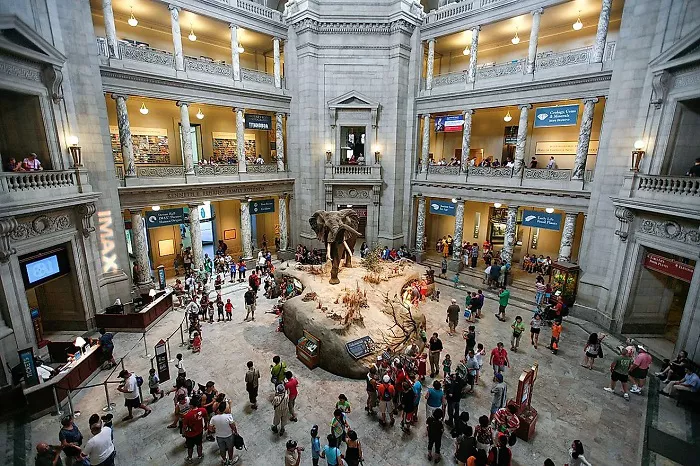Museums have long played a pivotal role in preserving cultural heritage and fostering societal growth. However, as society continues to evolve, museums are faced with the challenge of meeting the demands of a tech-savvy and diverse audience. Today’s museum professionals must embrace a range of new considerations that extend beyond the artifacts they showcase, including accessibility, sustainability, and the integration of technology. This article highlights six critical factors that shape the future of museums and offers practical strategies for curators and exhibit designers to stay relevant in an ever-changing landscape.
1. Visitor-Centered Design
As expectations for interactivity and personalized experiences rise, a traditional object-focused approach is no longer sufficient. Museums must adapt to meet the needs of a dynamic audience.
Practical Steps:
- Adaptive Storytelling: Tailor exhibit content through multimedia and interactive features to engage different audience segments, including children, academics, and multilingual visitors.
- Feedback Mechanisms: Incorporate real-time feedback methods such as digital surveys, interactive kiosks, or even emotion detection tools to assess visitor engagement and identify areas for improvement.
2. Accessibility and Inclusivity
Creating an environment that welcomes all visitors, regardless of ability, is not just a regulatory requirement—it is essential to the museum’s mission of cultural stewardship.
Practical Steps:
- Physical Accessibility: Implement clear signage, adjustable-height displays, and tactile exhibits for visitors with mobility and visual impairments.
- Sensory Considerations: Offer sign language interpretation, braille text, and touch-friendly exhibits with audible and tactile feedback.
- Digital Inclusion: Provide audio-described or captioned video tours to ensure that digital content is accessible to all visitors.
3. Sustainable Practices
Museums are entrusted with preserving not only cultural artifacts but also the planet’s future. Sustainable practices must become part of everyday operations.
Practical Steps:
- Energy Efficiency: Use LED lighting, smart climate control systems, and energy-efficient AV equipment to reduce both environmental impact and operating costs.
- Waste Reduction: Replace paper handouts with digital displays or QR codes that link to virtual materials, reducing waste while enhancing the visitor experience.
4. Thoughtful Integration of Technology
Technology is no longer a novelty but an expected part of the museum experience. However, curators must ensure that technology complements the core narrative rather than overshadowing it.
Practical Steps:
- Purposeful Integration: Incorporate personalized, tech-driven content that aligns with the museum’s mission and enhances the visitor experience.
- Data Privacy: Ensure compliance with privacy regulations when collecting visitor data and clearly communicate data usage policies.
- Future-Proofing: Invest in scalable digital platforms that can adapt to future technological advancements without requiring constant overhauls.
5. Multiple Interpretive Layers
Museums must cater to diverse learning styles, offering visitors multiple ways to engage with content, whether through text, hands-on activities, or digital tools.
Practical Steps:
- Tiered Content: Offer varying levels of information, from casual browsing to in-depth scholarly content, to meet the needs of different audiences.
- Multimedia Engagement: Incorporate soundscapes, videos, holograms, and interactive projections to cater to different learning preferences.
- Artifact-Centric Storytelling: Use projection mapping or augmented reality to bring artifacts to life, revealing hidden layers of historical context.
6. Continuous Evaluation and Improvement
Adapting to the evolving expectations of museum visitors is a continuous process. Establishing a culture of evaluation and iterative improvement ensures that exhibits remain engaging and responsive to audience feedback.
Practical Steps:
- Data Collection: Use both qualitative (interviews, comment boards) and quantitative (ticket sales, dwell time) methods to assess exhibit effectiveness.
- Iterative Upgrades: Embrace a “beta” mindset by making real-time adjustments to exhibits based on visitor feedback rather than waiting for complete overhauls.
- Professional Development: Encourage staff to engage in ongoing training to stay current with emerging trends and technologies in the museum field.
Conclusion: Museums Beyond Artifacts
The role of museums is rapidly transforming as technology and visitor expectations evolve. To remain relevant, museums must continue to prioritize education, preservation, and community engagement while embracing inclusivity, sustainability, and innovation.
As museum professionals navigate these changes, success will depend on collaboration within the museum sector and with the communities they serve. By staying agile, responsive, and forward-thinking, museums can ensure their place as vibrant cultural hubs for future generations. The key is to continuously adapt, listen to visitor feedback, and innovate to keep the museum experience fresh, dynamic, and meaningful.


